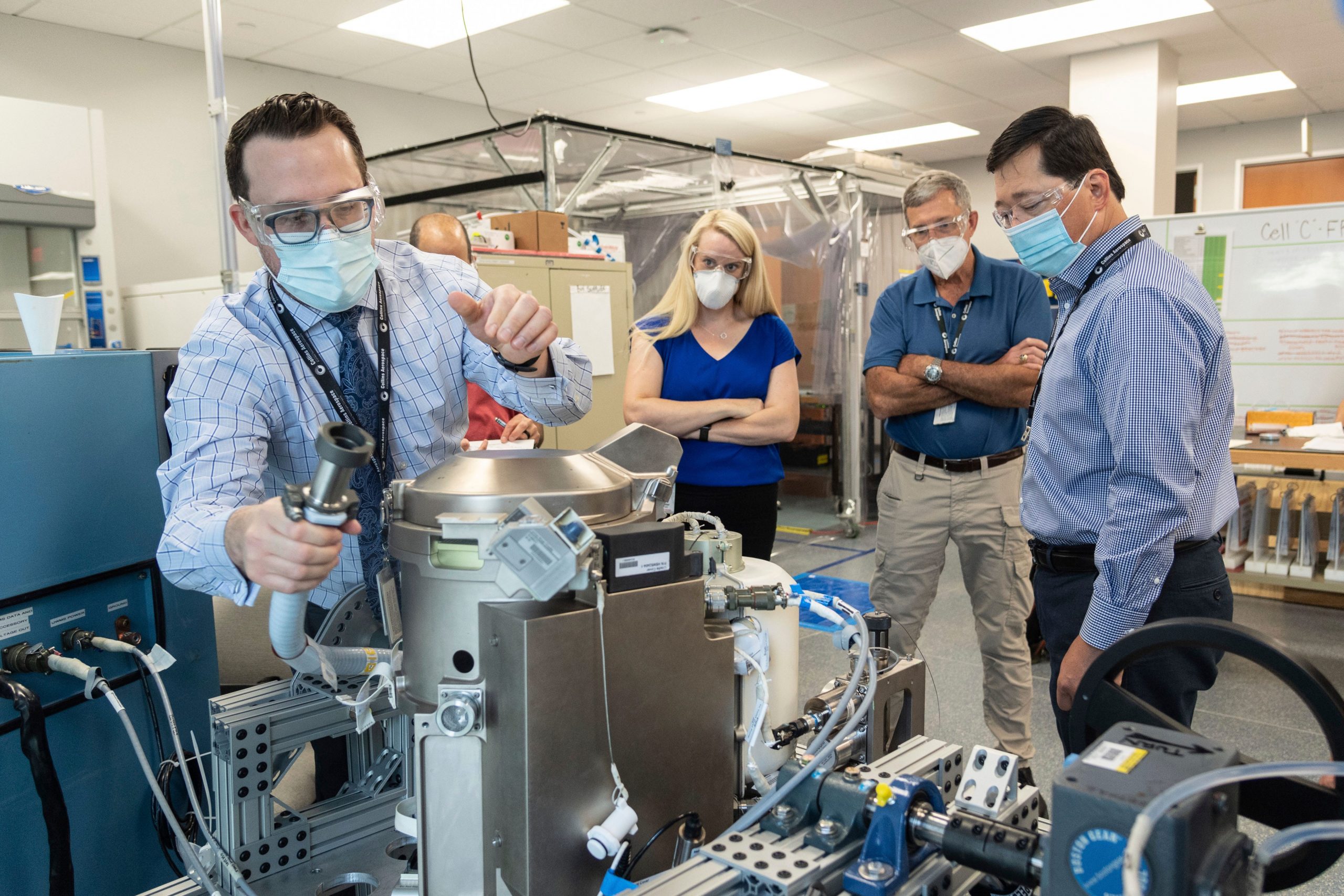
Norah Moran/NASA via AP
- NASA plans to use its Orion spacecraft to fly astronauts to the moon.
- But first, engineers have to figure out how to make the capsule’s toilet less stinky.
- A model of the toilet is launching to the International Space Station on Thursday night, where astronauts will test it out.
- Visit Business Insider’s homepage for more stories.
On Thursday evening, NASA is sending a new, $23 million toilet to the International Space Station.
It’s meant as a test: Astronauts on the ISS will test the toilet out before NASA installs an upgraded version on its Orion spaceship, which is slated to fly a crew to the moon as early as 2023.
Called the Universal Waste Management System (UWMS), the toilet is designed to be easier for women to use than prior space toilets. It’s also made of strong metals that can withstand a highly acidic solution that NASA uses to treat astronauts’ urine.
But Jason Hutt, the Orion spaceship’s engineering lead, said there’s still one kink with the UWMS: It’s too stinky.
“If you want to recreate that used spacecraft smell, take a couple dirty diapers, some microwave food wrappers, a used airsickness bag, and a few sweaty towels, put them in an old-school metal trash can, and let it bake in the summer sun for 10 days,” Hutt wrote on Twitter in August. “Then open the kid and breathe deep.”
Astronauts' pee could float in space forever

NASA
On the space station, the UWMS is slated to be installed next to one of the current ISS toilets. Though it's a demo model, the toilet is expected to stay on the station and be used there indefinitely.
Because there's no gravity in space to help flush waste downward, the UWMS uses motorized fans to suction away astronauts' urine and feces. On Orion, their poop would remain stored away until the ship returns to Earth. But there won't be room to store pee, and the spaceship can't recycle it into water the way the space station can —there's not enough space for a filtration system.
So the plan is for Orion astronauts to vent their pee into space, where it could float frozen forever (the temperature is -455 degrees Fahrenheit).
NASA has vented astronauts' pee into space before — the Space Shuttle toilet did the same thing. But during those flights, the urine froze onto the vent. This time, engineers are adding heaters into the system to prevent immediate freezing.

NASA
Because weight requirements for anything launching off of Earth are extremely strict, all space toilets have to be lightweight. But relying on small motors for powerful suction forces them to work hard. That means they're noisy. Because Orion is mostly made of aluminum alloy – it's "a big aluminum can," Hutt Business Insider – the noise of the toilet's whirring fans, clicking valves, and clanking machinery machine will reverberate throughout the ship.
But there's an upside: The loud sound gives toilet some privacy, since Orion's bathroom has only a thin door.
Astronauts can't use Febreze

NASA
Because Orion is only the length of a small powerboat and must house four waste-expelling adults for nearly a month, its toilet has to be compact and relatively odorless. The prospect of storing human waste for weeks at a time also requires engineers to figure out ways to tamp down the stench.
Engineers have nailed the first two elements, but are struggling with the third, Hutt said.
"Odor is really caused by the chemical compounds released from human waste breaking through the filter that's supposed to remove those compounds," he said.
Of course, any filters NASA uses must also be light and compact.
If odors do escape, astronauts have very few options to combat them.
"You can't just open a window whenever something smells bad," Hutt said.
NASA also can't allow chemical deodorizers, like Febreze, on spacecraft — they would pollute the air too quickly, potentially harming the astronauts inside. Plus, pressurized canisters aren't allowed given the risk they could explode.
"Spaceflight has its share of bumps, and we don't want anything in the cabin that could become a hazard," Hutt said.
So his team has been testing many potential deodorizer options. The tests require human noses, so NASA has "certified sniffers" at its White Sands Test Facility in New Mexico. True to their title, these employees are paid to smell the toilets after they've been used to evaluate whether odor-control measures are working.
These sniffers are the "unsung heroes of the space program," Hutt said.
So far, the safest deodorizer the team has experimented with is activated charcoal, a powdered charcoal that absorbs odors without requiring electricity or chemicals. The substance can be put into a filter in the ship's ventilation system.
This story has been updated with new information. It was originally published September 23, 2020.
